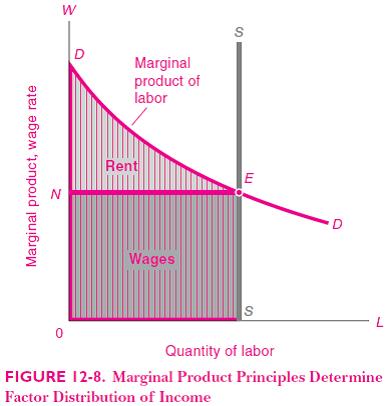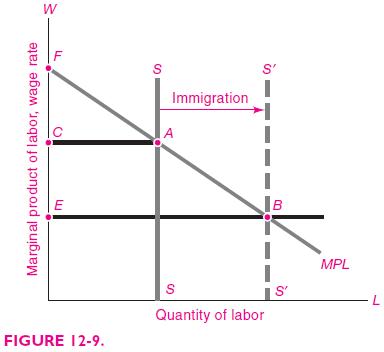We can use the neoclassical theory of distribution to analyze the impact of immigration on the distribution
Question:
We can use the neoclassical theory of distribution to analyze the impact of immigration on the distribution of total national income. Assume that there are two factors, homogeneous labor and capital, with returns being wages and profits. Look at Figure 12-9 , which has the same variables as Figure 12-8. We begin with initial supply curve S and at equilibrium point A. Now assume that there is a large increase in labor supply due to immigration, shifting the supply-of-labor curve from S to S′, as shown by the arrow. Assume that all other inputs are unchanged. Answer the following:
Figure 12-8

Figure 12-9

a. Describe and draw the new equilibrium after the immigration.
b. Explain what will happen to the wage rate.
c. Explain what happens to total profits and to the rate of profit (profits per unit of capital).
d. Explain why you cannot tell what will happen to total wages or to the share of labor income in total national income.
e. Note that this question looks at the impact of immigration on total national income. This analysis appears to differ from Chapter 3’s supply-and demand analysis of the impact of immigration on different cities. Explain the reason why immigration from Mexico to the United States will affect overall wages in the United States in this example, while immigration will not affect wage differentials between Miami and Detroit in the Chapter 3 example.
DistributionThe word "distribution" has several meanings in the financial world, most of them pertaining to the payment of assets from a fund, account, or individual security to an investor or beneficiary. Retirement account distributions are among the most...
Step by Step Answer:






